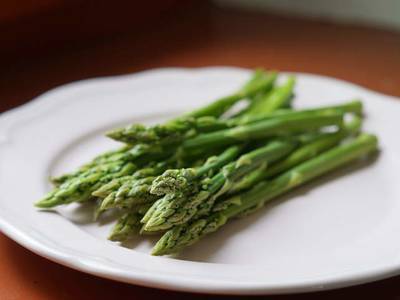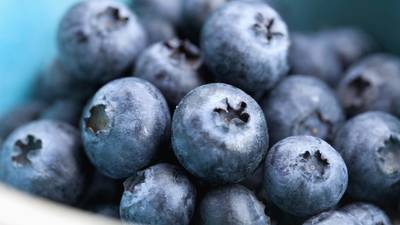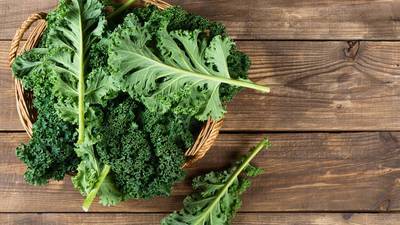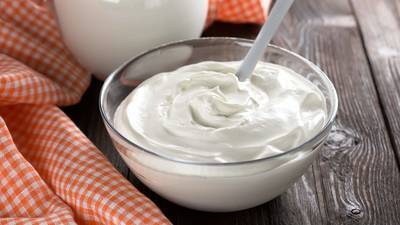Leslie Glass's Blog, page 325
October 30, 2018
Zoodles Alfredo For One
Last week, I found one of those vegetable spiral slicers at the grocery store. It was on sale for $3.50, so I tossed it in my cart. I bought three zucchini with NO expectations because they are after all zucchini. Unless they’re fried and coated with cheese, why bother?
I washed and spiraled my zucchini then sauteed them in butter. Thanks to my failed adventures in Keto, I still had some heavy whipping cream and Parmesan cheese in the fridge. I added a splash of each and let them melt together. The results were delicious. The recipe serves one, which lets me eat what I like and gives my family the freedom to eat what they choose – another example of recovery tools at work. Plus, they taste like pasta but are good for you.
Zoodles For One
1 Zucchini
2 Tablespoons of butter
3 Tablespoons of heavy whipping cream
3 Tablespoons of grated Parmesan cheese
Wash zucchini and remove ends. Melt butter in skillet. While the skillet is heating, place zucchini in the spiralizer, (I bought mine at Aldi’s) and twirl. Add zoodles to hot skillet. Saute for about five minutes. Once zoodles reach your version of done-ness, add cream and cheese to skillet. Stir to incorporate and melt. Remove from heat and enjoy.
Why For One?
Because as a recovering codependent, I’m extracting myself from enmeshed relationships. This week, in my recovery, I tackled the diet rules in my head. You can read about that adventure here.
 Want more delicious recipes seasoned with recovery tools? Check out our cookbook, The Codependent in The Kitchen.
Want more delicious recipes seasoned with recovery tools? Check out our cookbook, The Codependent in The Kitchen.
The post Zoodles Alfredo For One appeared first on Reach Out Recovery.
October 29, 2018
More Than 90% Of Generation Z Is Stressed Out. And Gun Violence Is Partly To Blame
Gun violence, political turmoil and personal problems are causing significant stress among America’s teenagers and youngest adults, according to a new report.
Members of Gen Z — people ages 15 to 21 — reported the worst mental health of any generation included in the American Psychological Association’s annual Stress in America report, which was based on almost 3,500 interviews with people ages 18 and older, plus 300 interviews with teenagers ages 15 to 17.
Just 45% of those in Gen Z reported “excellent” or “very good” mental health, compared to 56% of Millennials, 51% of Gen X individuals, 70% of Boomers and 74% of adults older than 73. Of the Gen Z respondents, 27% called their mental health “fair” or “poor” — and stress seems to be largely to blame, with 91% of Gen Z adults saying they had felt physical or emotional symptoms, such as depression or anxiety, associated with stress.
Stress levels were high across generations. The average reported level across age groups was a 4.9 out of 10. But while older adults tended to fall below this line — the averages among Boomers and older adults were 4.1 and 3.3, respectively — the opposite was true for younger generations. Gen X had an average stress level of 5.1, and Millennials had the highest overall, at 5.7. Gen Z fell in the middle, at 5.3, but in many categories, the youngest age group felt more stress than older peers.
Gun violence seemed to be a particularly large source of stress for the school-aged generation, with 75% of those in Gen Z calling mass shootings a significant source of stress. Seventy-two percent said the same of school shootings, and 21% of Gen Z students said the thought of a shooting occurring at their school was a constant or frequent source of stress. Their parents agree: 74% of parents included in the survey called school shootings a significant source of stress.
Other issues in the news, from rising suicide rates to sexual harassment to migrant family separation, also sparked more stress among Gen Z individuals than those in other generations, according to the report. Sixty-two percent called rising suicide rates a source of stress, compared to 44% of adults overall; 53% said the same of reported sexual harassment and assault, compared to 39% of adults overall; and 57% were stressed by family separations, compared to 45% of adults overall.
Despite these national issues, just 54% of Gen Z adults said they planned to vote in the 2018 midterm elections, lower than any other age group. (Still, there are signs voter turnout in this age group is increasing; other recent research suggests that significantly more young people will vote this year than in 2010 and 2014.)
But it’s not just the news that’s bringing young adults down. Work, finances and health-related concerns all stressed out more Gen Z adults than adults overall, the report says. Money was the most common source of stress, affecting 81% of Gen Z adults and 64% of adults overall.
Just as concerning as the prevalence of stress was the struggle to manage it. Though 37% of Gen Z individuals — more than any other generation — reported receiving help from a mental health professional, only half said they felt they did enough to manage their stress. Nearly three-quarters also said they could have used more emotional support over the past year.
Other recent surveys have shown that levels of loneliness are high among young people, which may contribute to the stress epidemic. Research has shown that a strong social network can help mitigate the effects of stress and improve mental health overall. Social media doesn’t seem to be helping, either — while about half said it was a source of support, another 45% said social media made them feel judged, and 38% said it made them feel bad about themselves.
Having difficulty coping with stress wasn’t just a Gen Z trait. About 20% of all survey respondents said they didn’t do enough to manage their stress.
There is a bright spot, however: Despite high levels of stress and frustration with the national and political climate, 75% of all respondents said they feel hopeful about their future.
The post More Than 90% Of Generation Z Is Stressed Out. And Gun Violence Is Partly To Blame appeared first on Reach Out Recovery.
There’s Worrying New Research About Kids’ Screen Time And Their Mental Health
Young people who spend seven hours or more a day on screens are more than twice as likely to be diagnosed with depression or anxiety than those who use screens for an hour a day, finds a new study published in the journal Preventive Medicine Reports.
The data came from more than 40,000 kids ages two to 17 and was collected as part of the Census Bureau’s 2016 National Survey of Children’s Health. While spending seven or more hours a day on screens was not typical among the younger kids in the study, roughly 20% of 14- to 17-year-olds spent this amount of time on screens each day. (This dovetails with a recent Pew Research Center report that found teens use the Internet “almost constantly.” They’re likely following their parents’ lead: some estimates show that U.S. adults now spend roughly 10 hours a day staring at TVs or digital devices.)
Along with the associations between screen time and diagnoses of depression and anxiety, the study found that young people who spent seven hours or more a day on screens (not including schoolwork) were more easily distracted, less emotionally stable and had more problems finishing tasks and making friends compared to those who spent just an hour a day on screens (not including schoolwork).
Many of these same negative trends also turned up to a lesser degree among young people who used screens for four hours a day. Also, adolescents seemed to have more problems than younger kids as a result of heavy screen use.
“At first, I was surprised that the associations were larger for adolescents than for younger children,” says Jean Twenge, the study’s first author and a professor of psychology at San Diego State University. “However, teens spend more time on their phones and on social media, and we know from other research that these activities are more strongly linked to low wellbeing than watching TV and videos, which is most of younger children’s screen time.”
Twenge has spent the last few years examining the effects of digital technologies on the health and wellbeing of kids, many of which are documented in her book iGen. Some of her recent work has linked newer forms of media—particularly smartphones and social media—with sleep problems among adolescents. She’s also found that kids who spend more time on screens tend to be less happy than kids who engage in non-screen activities like playing sports, reading traditional printed media or spending time socializing with friends face-to-face.
Her work has contributed to growing concerns among some parents, teachers, guidance counselors and doctors that too much time spent on screens—especially on smartphones—may be linked to recent increases in teen depression and suicide.
Twenge says her study shows “a clear and strong association” between more screen time and lower wellbeing. “At the moment, the American Academy of Pediatrics guidelines set specific time limits on screen time only for children [ages] five and younger,” she says. “These findings and others suggest the AAP should consider extending these specific limits to older children and adolescents.” The AAP currently recommends that kids ages 2 to 5 use screens for no more than one hour a day, not including time spent video chatting with family or friends. But they do not recommend specific screen-time restrictions for older kids.
Not everyone agrees with the conclusions of Twenge’s new study. “The authors appear to have cherry picked outcome measures in terms of what results they could find that are statistically significant,” says Andrew Przybylski, an associate professor and director of research at the Oxford Internet Institute at the University of Oxford in the UK.
Last year, Przybylski published a study that examined an older (2011-2012) version of the same Census Bureau dataset that Twenge and her coauthor analyzed in their new paper. Based on the 2011-2012 data, Przybylski’s study concluded that the AAP’s advice to limit the screen time of young kids was not warranted.
“It is true that there is a very small and consistent correlation in many datasets between screen time and a range of outcomes,” he says. But the correlation some studies have found between increased screen time and outcomes like depression do not prove one is to blame for the other, he says. It may be that kids who are anxious or depressed are just more likely to spend a lot of time using screens. “For the research [in this] area to mature, people need to sort out these factors before making expansive claims,” he adds.
Other researchers not affiliated with Twenge’s new paper believe that the findings are important.
“This is a very impressive study,” says Dr. Brian Primack, a professor of medicine and pediatrics and director of the Center for Research on Media, Technology, and Health at the University of Pittsburgh. “This study goes beyond prior work in terms of giving a more fine-grained picture, which suggests that one hour of daily screen time may be an important threshold. It also provides relatively consistent patterns around multiple different concerning outcomes, such as depression, anxiety, problems completing tasks, and increased arguing.”
Primack says that no single study can provide “a complete picture” on the effects of screens on young people’s mental health, and that more research is needed. But when it comes to some screen-based activities—especially those related to social media and smartphones—parents have reason to be worried. “I would say that we now have enough evidence of concern that we should be exerting more caution than we are,” he says.
The post There’s Worrying New Research About Kids’ Screen Time And Their Mental Health appeared first on Reach Out Recovery.
Talking To Men About Depression
From Psychology Today:
Not so long ago I had to approach a friend to discuss what appeared to me to be a battle with depression. It was clear to me that this debilitating disorder was affecting both him and the people around him, and that some type of loving intervention was needed. But wow, was this a nerve-wracking conversation to have. And I’m a therapist!
Part of the difficulty was that my friend’s symptoms were more about impatience, irritability, and anger than behaviors we typically associate with depression, such as crying, moping, and an inability to get started with any task because everything seems so daunting. And this is often a reason why depression in men can be more difficult to identify than depression in women. Depressed women tend to “act in” (sleeping too much, crying, overeating, drinking too much, failing to fully function, etc.), while depressed men tend to “act out” with unpleasant behaviors. So a depressed woman might look and act depressed, while a depressed man might just seem like he’s being a jerk.
Yes, plenty of men do get depressed with tears and an inability to function, and plenty of women express anger and rage when they’re depressed, but as a general rule, depressed women are more obvious about what they’re feeling, while men just seem unhappy and angry. And that’s what I was experiencing with my friend—a great guy for many years who slowly but steadily became incredibly unpleasant over the course of a year. I know this individual well and felt certain that he was acting out not because he’s a jerk, but because he was depressed, so I decided to share this with him. But still, this was not an easy thing to do.
I worried:
What if I’m wrong and he really isn’t depressed?
What if he gets angry with me for my “accusation”?
What if trying to intervene costs me an important friendship?
And then I worried the opposite:
What if I’m right and I don’t say something and he never gets help?
What if he desperately needs to know that someone cares enough to say something?
What if I don’t intervene and I lose an important friendship to suicide?
So yeah, when a person in your life is showing signs of depression, you’ve got a tough decision to make. Do you take the seemingly easy path and hope things will run their course, or do you step up and try to help? The answer, if you’re wondering, is that you absolutely must step up and help.
In many respects, intervening with depression is like intervening with an addiction. First and foremost, you should know that depressed people, especially men, can be deeply in denial about their problem and the negative impact it’s having on them and the people around them. They may actually have no conscious knowledge that they look and act depressed. And even if they are consciously aware, they may craft a web of lies that they tell themselves (and others) about why they seem to be struggling. Often, they blame other people, especially those closest to them, for their ongoing bad mood.
This, of course, can make attempts to help them difficult at best. But there are ways to intervene successfully.
Know What You are Dealing With
First and foremost, you must understand the nature of depression, including the signs and symptoms. As stated above, depression can manifest differently in men and women. In general, however, the warning signs are as follows:
Expressing a negative or a hopeless outlook.
Losing interest in previously enjoyable hobbies and activities.
Social and emotional isolation.
Sleeping too much or too little.
Eating too much or too little or poorly (junk food).
Expressing shame, guilt, and feelings of worthlessness.
Talking about death or suicide (even in passing).
Sudden bursts of irritability, agitation, anger, rage, etc.
Blaming others for personal problems.
Feeling trapped.
Unexplained pain and/or physical malaise.
Feeling like a burden.
Increased use of alcohol, drugs, or an addictive behavior (porn, sex, gambling, spending, etc.)
Extreme mood swings.If you see more than one or two of these warning signs on a consistent basis in a man you care about, you need to initiate a conversation about depression. If you’re uncomfortable having this conversation one-on-one, speak with his family and friends and ask them to assist.Speak Up
You can’t help a struggling man if you don’t speak up. If you stay silent, the depression will continue, perhaps indefinitely, or until he eventually commits suicide. So you must initiate a conversation, however difficult and anxiety-inducing that might be.
The best way to go about this is to use the “addiction intervention” model of telling him that you love him and care about him, and you are worried for his safety and wellbeing. Next, you can say that you think he is suffering from depression. Then you should list the signs of depression that you have seen him exhibit. If you’re worried about suicide, be direct: Ask him, “Are you thinking about killing yourself?”
Be prepared for any response—anger, fear, crying, resignation, desperation, and just about any other emotion you can think of. Whatever the response, be willing to sit there and to let him get it out. Listen with patience and compassion. Make sure he knows you care and want to help. Do not leave until you feel certain he is not a danger to himself or anyone else.
Most of all, you need to let him know that help is available, so he doesn’t have to always feel this way. Ideally, you will steer him to both a medical doctor and a certified psychotherapist who specializes in depression and related issues. Clergy members can also help, as can friends, family, and support groups for men dealing with depression.
If he is willing to listen, you can educate him about treatments for depression, which include:
Individual therapy, where he can explore thoughts, feelings, and behaviors, and develop coping skills to help manage depression.
Group therapy, with the same basic goals as individual therapy, but with added support from others who are also fighting depression.
Medications (antidepressants and mood stabilizers) can help a depressed individual manage the symptoms (though they don’t “cure” depression).
Support groups for men with depression provide confidential spaces for depressed men to share openly and honestly and to support one another.
Eating healthier, developing healthy sleep habits, and exercising regularly are helpful in combatting depression.
If a depressed man says that he is suicidal, you need to immediately call 911 or take him to the nearest Emergency Room.
Resources you can share with a depressed man include:
I Don’t Want to Talk About It: Overcoming the Secret Legacy of Male Depression, by Terrence Real.
American Foundation for Suicide Prevention: This site provides information on finding support for people at risk of suicide.
American Psychological Association: This site offers, among other things, the latest information about depression, anxiety, and related conditions.
American Psychiatric Association: This is the professional organization for psychiatrists, with links to resources about mental health problems, information about medications, and more.
Anxiety and Depression Association of America: This site offers facts about depression and its symptoms, plus information on finding treatment, getting support, and more.
Brain and Behavior Research Foundation: This site offers, among other things, information about depression, anxiety, and related conditions.
Crisis Text Line: Anyone in an immediate mental health crisis can text a specialist with this service, 24/7/365. Text HOME to 741741 to speak to a trained crisis counselor.
: This is a self-helporganization for depression, anxiety, and bipolar disorder.
Drug News: Information about prescription medications, warnings about products, patient stories, and possible side effects.
Mental Health America: This is a mental health nonprofit with information about various disorders and a large list of resources.
National Association of Mental Illness: Provides education and support about mental health disorders, including depression.
National Center for Complementary and Integrative Health: Provides information about medications and alternative and holistic therapies, including herbs and supplements.
National Institute of Mental Health: The largest mental health organization in the world, NIMH offers detailed information on depression and related disorders.
National Suicide Prevention Lifeline: This site offers a free, 24-hour suicide prevention hotline. 1.800.273.8255. This is a nationwide service. The website offers a wide variety of resources.
The post Talking To Men About Depression appeared first on Reach Out Recovery.
October 28, 2018
Alcohol Math For Girls More Lemonade Please
Did you know when it comes to alcohol math girls may not be safe at any level of drinking? It’s biology. Girls are impaired after one drink and drunk after two. Alcohol affects the behavior of your boys, of course, but not to the same degree or with the same adverse consequences. For boys, drinking is just a rite of passage and all too often a way to get laid without getting in trouble. For girls the adverse consequences are lasting. Do you know the alcohol math?
Alcohol Math At College
More kids die on college campuses as a result of alcohol or substances every year than in the military.
One in four college students is sexually assaulted as the result of drinking.
If fun in high school or college is drinking, your daughter is not going to tell you about the adverse consequences.
If your daughter, sister, friend has been assaulted in high school or college as the result of drinking, she is not likely to tell you, or the faculty, or seek help.
For girls, drinking and adverse alcohol experiences are not a just a rite of passage as they are experienced by boys.
If your daughter dares to talk, she will be blamed.
If she keeps the secret, the trauma and shame of adverse alcohol experiences in high school and college are lasting and life-changing.
What Girls Don’t Know
Girls, especially in high school, know that their parents don’t want them drinking. They know bad things can happen, but they want to have fun and be grown up. Young adults in college are encouraged to drink not just one, but to drink heavily. Girls and young women know they get drunk and feel sick. They know they act stupid and reckless. When they get assaulted, they blame themselves. Girls are taught that they can have fun and drink with the boys. They are taught to blame themselves for the adverse alcohol experiences that lead to assault.
Girls don’t know that no level of alcohol consumption is safe for them
It isn’t just pregnant women who can’t drink without consequences.
Why Girls Can’t Drink Safely
Girls get drunk quicker and stay drunk longer. The simple reason for this is biology. Males have more water and enzymes in their bodies that allow them absorb alcohol more efficiently than women. A few drinks for a male will make them reckless and aggressive; even one drink for a girl renders her incapable of protecting herself.
Let’s Do The Alcohol Math
If you’ve ever seen a BAC (Blood Alcohol Content) card, you will know that girls’ blood alcohol content rises at a faster rate than boys. But BAC cards have not caught on in the seven years we’re been writing about alcohol. What do the numbers on the BAC cards really mean? When girls have just one drink, brain function is impaired. Reflexes are impaired. Judgement is impaired. They are no longer able to say no. Is this new information for you?
One Drink For a Boy Equals Two For A Girl
You may have to see the math to understand how extreme the imbalance is between males and females and how little alcohol it takes to incapacitate girls.
1 drink for a boy = 2 drinks for a girl
2 drinks for a boy = 4 drinks for a girl
3 drinks for a boy = 6 drinks for a girl
The simple fact is your daughters, sisters, friends are at risk for sexual exploitation after just one drink. But how many girls know that? How many girls and women are taught to think that the fun has to stop after one drink. Girls are taught to play the drinking games and to keep up with the boys.
Now You Know The Alcohol Math
Now you know that when your daughter, sister, friends, have two drinks it’s the same as a male having four. And when they have three drinks, it’s the same as a boy having six. It’s time for a change. #notmetoo, #knowyourlimit
References:
From Celeste Robb-Nicholson, M.D., Editor in Chief, @ Harvard Women’s Health Watch: Why Does Alcohol Affect Women Differently?
From The National Institute on Alcohol Abuse and Alcoholism: Women And Alcohol
The post Alcohol Math For Girls More Lemonade Please appeared first on Reach Out Recovery.
10 Best Weight Loss Foods

Apples
“An apple a day may keep extra pounds away,” says Katherine Brooking, RD, co-founder of Appetite for Health. A medium apple has around 95 calories and 5 grams of filling fiber. Apple peels are also a rich source of ursolic acid, a natural plant compound that has been shown in preliminary studies to increase fat-burning. In addition, one study reported that women who added three small apples (equal to 200 calories) to their diet per day lost a little more than 2.5 pounds in 12 weeks—more than dieters who did not include the fruit in their diet.

Asparagus
With just 40 calories per cup, asparagus packs in 4.5 grams of protein and 4 grams of fiber, making it one of the best picks to get the number on your scale headed south. “The veggie’s high protein and fiber and low calorie counts make it a top pick for anyone trying to keep hunger at bay,” notes Torey Armul, RD, a spokesperson for the Academy of Nutrition and Dietetics. Asparagus is also an excellent source of vitamins A, C, K, folate, and iron.

Beans
As a plant-based, protein-packed choice, beans are one of the best foods to enjoy when you’re trying to trim down. “Beans are metabolized slowly, so they may aid in weight loss by keeping you feeling fuller longer,” notes Bonnie Taub-Dix, RDN. A half-cup of beans provides about 110 calories and 7 grams of protein, around the same amount of protein as you’d get in an ounce of chicken or fish. Beans are also considered a nutrient-rich superfood providing antioxidants, iron, potassium, and zinc.

Berries
Want something sweet to enjoy that can help you trim down and tone up too? Eat more berries, suggests Susan Burke March, RDN. Berries are low in calories, high in fiber, and will satisfy your cravings for something sweet without any added sugar. One study revealed that eating a snack of 65 calories of mixed berries resulted in participants eating 133 fewer calories at dinner, compared to those who ate a 65-calorie sugary treat instead. Another study that looked at the eating patterns of more than 130,000 adults for more than 20 years found that berries were one of the best fruits for maintaining a healthy weight.

Citrus fruit
You shouldn’t eat only grapefruit–but citrus fruit can help tip the scale in your favor. Sweet and juicy grapefruit and oranges are a tasty way to help whittle your middle, suggests Brooking. A medium orange has just 60 calories and 3 grams of fiber, while a grapefruit has around 100 calories and 4 grams of fiber. Due to their high water and fiber counts, citrus fruits have lower glycemic index scores and can help temper blood sugar levels to keep you satisfied for longer.

Cottage cheese
Cottage cheese has a long-standing reputation for being a diet-friendly health food for good reason. “Cottage cheese keeps you satiated because it’s high in protein, and it pairs perfectly with sweet (like fresh fruit and cinnamon) or savory (like salad or your favorite veggies),” notes Taub-Dix. “If you’re watching your weight, even the 4% fat version of cottage cheese [typically] has only 110 calories per serving while low-fat (2%) has around 90.”

Eggs
“When clients ask me which foods I recommend when they want to lose weight, protein-rich choices like eggs are always on my list,” explains Elisabetta Politi, MPH, RD, nutrition director of the Duke Diet and Fitness Center in Durham, North Carolina. “Eggs are great because they’re inexpensive, easy to prepare, and you can carry hard-boiled eggs with you.” A large egg has around 70 calories, 13 essential nutrients, and 6 grams of high-quality protein. Studies show that eating a balanced, egg-based breakfast can help keep you satisfied so it’s easier to limit your overall calories later in the day to help you peel off pounds.

Kale (and other dark, leafy greens)
Nutrient-dense dark, leafy greens like kale, spinach, and arugula only have about 25 to 30 calories per cup and are loaded with fiber, keeping you fuller on fewer calories, notes Malina Malkani, RDN, a spokesperson for the Academy of Nutrition and Dietetics. “It’s important to focus on foods that provide the most nutrients per calories, to help you feel your best while losing weight,” she adds.

Greek yogurt
Thanks to its high protein content and lower sugar counts, Greek yogurt (as well as other types of strained yogurt) can help keep you satisfied, explains Armul. Greek yogurt has about twice the protein and half the sugar of traditional yogurts. A study of more than 8,500 European adults reported that those who enjoyed a serving or more of European-style strained yogurt every day were 20% less likely to become overweight and 38% less likely to become obese during the six-year study compared to those who ate fewer than two servings of yogurt per week.

Potatoes
You have to pity the poor potato, with its much-maligned and undeserved reputation for being fattening. Potatoes aren’t the problem; it’s what we do to them (fry them, turn them into chips, or smother them in sour cream) that hurts our health, explains Burke March. A medium potato has around 160 calories, 4 grams of fiber, and is an excellent source of vitamin C and potassium. What’s more, taters are tops for satiety, thanks to their fiber and resistant starch, so enjoying a spud can help you achieve your healthy weight goals.
Stress eating is also a problem. Here’s advice on how to stop.
The post 10 Best Weight Loss Foods appeared first on Reach Out Recovery.
October 27, 2018
Skipping Meals Makes You Crazy
Want to know what happens to your brain when you start skipping meals to lose weight? Brain fog, irritability, and finally downright rage. Why does this happen? You’re not losing weight, you’re starving your brain. For people in recovery, who need lots of healthy food to heal their brains, starving it is a very bad idea.
Guess what? Your brain needs glucose to function well. When you skip meals your blood sugar drops and the first thing that happens is your ability to think straight is hampered. You’re literally starving the most important part of your body. Your thinker. When there is not enough glucose for the brain, the rest of you your body does not function at 100 percent either.
Do you have friends (or relatives) who get super grumpy sometimes? Low blood sugar causes people to feel irritable, confused and fatigued. The body begins to increase production of cortisol, leaving us stressed and hangry.
Skipping meals can also cause your metabolism to slow down, which can cause weight gain or make it harder to lose weight. Skipping meals puts your body into survival mode. It causes you to crave food and eat more when you get the chance.
When we skip meals, we tend to crave unhealthy, fatty, sugary foods. When that happens, we succumb. Forget eating healthy. When you are that hungry, you’l go for anything.
7 Tips to avoid skipping meals
Eat smaller, frequent meals throughout the day rather than skipping meals.
Always have a snack around like yogurt or a granola bar to hold you over until your next meal.
Eat snacks high in protein and fiber. They will keep you full longer.
Plan your meals in advance or prepare them the night before.
Make a schedule for the week to avoid over booking yourself or falling behind.
Set an alarm to ring at lunchtime if you are going to be running around all day.
Make a lunch date. You cannot skip a meal if you have already made plans with friends or family.
The post Skipping Meals Makes You Crazy appeared first on Reach Out Recovery.
How To Stop Stress Eating
Stress eating may be your biggest weight gain problem. What should you do? When times are tough, it’s easy find comfort in a donut, a bag of chips, or even chocolate. Many have come to believe stress eating is a fact of life. Here’s some good news. Saying “I’m a stress eater” is a reaction to stress based on a belief. You can change this by asking “How do I manage my weight when my stress level is a 10?”
Considering that stress is the single biggest cause of all disease and lifestyle challenges, including chronic dieting, obesity, diabetes and cravings … it’s not surprising that there is a relationship between the ways we physically and mentally experience stress. The question is easier to understand if we break it down into smaller chunks to examine.
What Is Stress
The dictionary defines stress as “A state of mental or emotional strain or tension resulting from adverse or very demanding circumstances.” This definition is interesting. It doesn’t say stress is either “good” or “bad.” The body recognizes a demanding circumstance and reacts. For some folks, the stress causes weight loss. Others gain weight. Regardless of the circumstances or the distinction, stress can be experienced:
Chemically, in the processes of the body
Emotionally, in our thoughts, feelings and beliefs
Spiritually, in our sense of connection
Structurally, in our bones and muscles
The Stress Reaction
From a physiological standpoint, stress causes an increase in cortisol production. This is which is associated with:
Weight gain
An inability to lose weight
Premature aging
Increases in LDL levels of blood cholesterol, salt retention, insulin resistance, and general inflammation
In fact, the moment stress is activated, the digestive system shuts down. Blood is rerouted to the extremities, and the body prepares for fight or flight.
When stress is ON; digestion is OFF.
Being A Stress Eater Is A Belief?!?
This is an interesting point. The brain cannot differentiate between real and imagined stress. Therefore, eating as a go-to response to stress, produces the same physiological reaction by the body as being chased by a bear. As long as we are experiencing stress, or believe that we are, digestion is turned OFF. If we couple this with the habit of telling ourselves that the necessary response to stress is to eat (“stress eater”), then weight gain is an inevitable result.
Coping With Stress Needs Habit Change
Instead, if we consider that reducing and coping with stress requires a habit change, we can create another possibility. This is great news! Habits are merely rituals or thoughts that have been repeated over time where the thinker believes them to be true. Habits don’t require us to remember to do something. They are just a go-to response. Since habits are at the mercy of our thoughts, changing a habit requires re-wiring the brain. First, we must learn to think a different thought and not rely on the old response.
New Way To Think
Instead of this response: “I’m a stress eater. My stress level is a 10. I must eat.” We can try: “I’m feeling stressed. I must go for a walk. Walking helps reduce my stress.” Or jogging, or calling a friend, or meditating, or any number of other activities that might resonate with you. And here are 10 foods you should be eating when you just have to have a snack.
The post How To Stop Stress Eating appeared first on Reach Out Recovery.
Jamie Lee Curtis Opens Up About Opioid Addiction
From Alexia Fernandez @ MSN: Jamie Lee Curtis is opening up about a dark period in her past. The Halloween star, 59, tells PEOPLE that she’s lucky to have survived a secret addiction to opiates that began in the late ‘80s.
“I was ahead of the curve of the opiate epidemic,” Curtis says in this week’s cover story. “I had a 10 year-run, stealing, conniving. No one knew. No one.”
Curtis has a long family history of addition. Her father, Some Like It Hot actor Tony Curtis, abused alcohol, cocaine and heroin. Her half-brother Nicholas Curtis died from a heroin overdose in 1994.
The actress says she was prescribed opiates for the first time in 1989 after minor plastic surgery “for my heredity puffy eyes.” She spent the next decade getting painkillers any way she could. She even stole pills from friends and family, including her older sister Kelly, who was the first person to find out about her addiction in 1998.
Curtis attended her first recovery meeting in February 1999. She told her husband of 33 years, actor-director Christopher Guest, about her addiction that day. The couple has two kids: daughter Annie, 31; and son Tom, 22.
“I’m breaking the cycle that has basically destroyed the lives of generations in my family,” Curtis says. “Getting sober remains my single greatest accomplishment…bigger than my husband, bigger than both of my children and bigger than any work, success, failure. Anything.”
The veteran actress has been sober for nearly 20 years and says she continues to attend meetings, offering help to others who are struggling with addiction.
“In recovery meetings, anyone who brings up opiates, the entire room will turn and look at me, because I’ll be like, ‘Oh here, talk to me. I’m the opiate girl,’” she says.
Curtis is revisiting the role of Laure Strode in Halloween, which launched her acting career 40 years ago. The new sequel broke box-office records after its $77.5 million domestic opening weekend – the biggest opening ever for lead actress over the age of 55.
The post Jamie Lee Curtis Opens Up About Opioid Addiction appeared first on Reach Out Recovery.
October 26, 2018
Michael Phelps: His Battle With Depression & Thoughts of Suicide
From Dave Quinn @ People: Michael Phelps has become a prominent advocate for mental health over the years thanks to his frankness about anxiety and depression, which at its worst caused him to have suicidal thoughts.
And regardless of his record-breaking success, the champion Olympic swimmer, 33, says he still “struggling weekly” with his own internal demons.
“From time to time, I’ll have bad days where I do go into a depression state,” Phelps said on Thursday’s episode of Today, opening up about his battle in a revealing conversation with Savannah Guthrie and Hoda Kotb.
“Being an athlete, you’re supposed to be strong and be able to push through anything. My struggles carried on through my career and I hid them well,” the father of two explained. “There are so many people who struggle from very similar things that I go through and still go through. … At times, it was a little scary and challenging to go through, but I found a way to get through it and I’m addressing these issues that I have.”
Phelps first revealed his private struggle with anxiety and depression prior to competing in the 2016 Olympics in Rio de Janeiro, Brazil.
At his lowest point in October 2014, Phelps — who was arrested for drunk driving in 2004 and again in 2014 — said he didn’t leave his house for five days and was suicidal.
“For me, I was so down on myself. I didn’t have any self-love and quite honestly, I just didn’t want to be alive,” he told Today. “It was a really, really, really crazy time for me and I didn’t want to see anybody. I saw myself as letting so many people down — and my, myself, in particular. That’s hard to carry.”
Anxiety affects about 40 million Americans over the age of 18, according to the Anxiety and Depression Association of America. Though disorders associated with anxiety are highly treatable, the organization says less than 40 percent of sufferers receive treatment.
Asking for help and talking about his feelings, instead of keeping them bottled up, is what helped Phelps push back during those dark days.
“Over those three or four days where I didn’t want to leave my room and I didn’t want to talk to anybody, I finally realized that I can ask for help and it’s okay not to be okay,” Phelps admitted. “And for me, that’s what changed my life. I never asked for help really ever in my career. That was the first time that I really did that. I was basically on my knees, crying for help.”
Now, Phelps is hoping that everyone seeks that help. He’s a shareholder and member of the advisory board with TalkSpace, an online and mobile therapy company that pairs users with licensed therapists.
“I’m lucky to be able to sit down with a therapist and chat and talk and open up,” he said on Today. “It’s challenging for people to do. And being able to work with TalkSpace, traveling as much as I do, to have the access on my phone where I can pop on whenever I want — 24 hours a day, 7 days a week — and get the help that I need? It’s something that continues to teach me more and more about myself.”
“That’s something that’s fun for me moving forward, especially with two kids,” Phelps added.
Also in his Today interview, Phelps opened up about sons Beckett, 8 months, and Boomer, 2.
“They’re learning the sharing process, it’s pretty incredible,” he said.
As for whether Boomer will be following in his father’s swim strokes, Phelps said “if he wants.”
“His kick is unbelievable. It’s truly is insane to watch how fearless he is in the water,” the dad shared. “If he wants to swim, cool. Whatever makes him happy. I don’t want him to ever feel the pressure of kind of living in what I’ve done, in my shadow. I want him to be able to kind of just make himself, to live what he wants to do.”
If you or someone you know is showing warning signs of suicide, consider contacting the National Suicide Prevention Lifeline at 800-273-TALK, texting the Crisis Text Line at 741741 or seeking help from a professional.
The post Michael Phelps: His Battle With Depression & Thoughts of Suicide appeared first on Reach Out Recovery.




